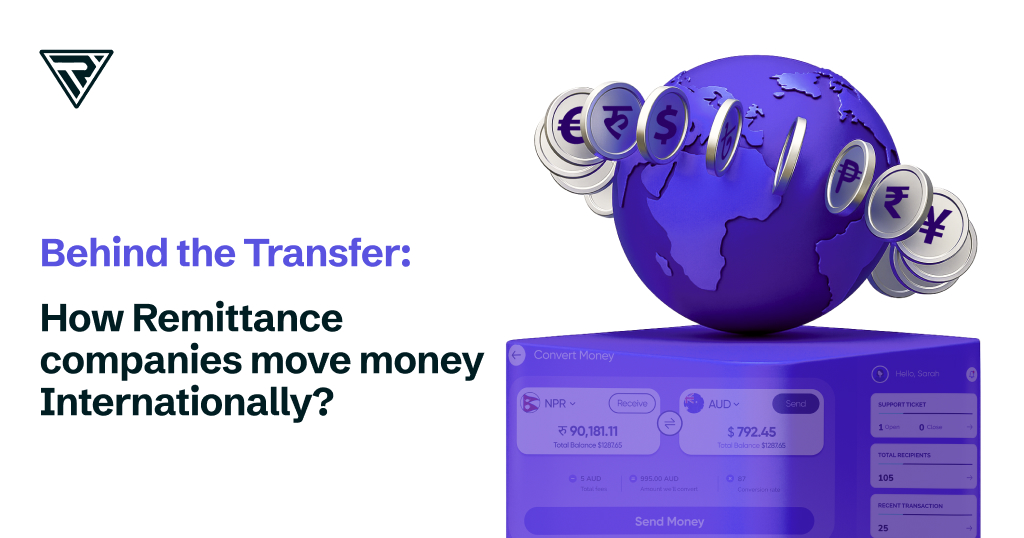Behind the Transfer: How Remittance Companies Move Money Internationally

From large-scale business payments to small-value personal money transfers, multiple cross-border financial transactions are made every day. In 2024 alone, global remittances are predicted to have hit a record $905.98 billion. This cross-border capital flow plays a huge role in building and managing economies, as well as maintaining personal relationships.
Remittance companies are service providers who enable international money transfers and connect the world through remittance. While transferring money internationally is a complex task, recent technological advancements have allowed companies to process payments in seconds rather than days. But how do these networks actually work? Let’s find out!
Understanding Remittances
In simple words, remittance is defined as the transfer of funds from a sender to a receiver located across borders.
However, these fund transfers aren’t as simple as the transfer of money from A to B. It involves carrying out currency conversions, passing through intricate financial systems and intermediaries, and maintaining compliance with local and international regulations to actually make international money transfers possible.
Remittance companies act as the bridge that handles all the heavy work to make the transactions as seamless and quick as possible. They hold a proprietary technology infrastructure that includes compliant and secure remittance software, as well as good relationships with banking and other payment institutions.
How Remittance Companies Deliver Money Around the World
From the sender creating the money transfer request to successful transfer, the process typically follows several key steps:
Money Transfer Initiation
The process begins with the sender submitting a transfer request to the remittance service provider. The sender would provide necessary details to create the transfer request, such as the recipient’s name, bank account or mobile wallet information, the amount to send, and the preferred payout method.
These companies process transfer requests through a variety of channels, such as physical agent locations, online remittance platforms, and mobile applications. Nowadays, most transfers are processed digitally using remittance software. It allows users to initiate a money transfer request by paying the transfer amount. Furthermore, this amount includes the sending amount, transfer fees, and currency conversion charges.
User Verification And Compliance Checks
The remittance companies are obliged to comply with Know Your Customer (KYC), Anti-Money Laundering (AML), Counter-Terrorist Financing (CTF), Data Protection Laws and other local as well as international regulations. Most remittance software includes compliance protocols that monitor the identities of both the sender and the recipient to ensure they are authentic, as well as any suspicious transactions.
That is why the amount and number of transfers that the user can initiate are limited. If the sender wishes to increase this limit, they must first ensure that both the source of funds and the reason for the transfer are genuine.
Currency Conversion
Based on the recipient’s country, the currency is converted from the sender’s currency to the recipient’s currency using the set exchange rate. These exchange rates often include a markup that further constitutes operational costs and profit margins. There are very few reliable service providers that actually offer a favourable exchange rate, which limits the actual value of transfers.
Moving the Money Across The Transfer Network
- Banking Networks: Remittance companies transfer funds through correspondent bank accounts in both sending and receiving countries. Money moves from the sender’s bank account to the recipient’s bank account after passing through these correspondent accounts.
- Proprietary Networks: Remittance companies operate proprietary networks of agents and partners across various countries to facilitate payments. After the remittance service provider approves the money transfer request, recipients can pick up cash directly from local agents.
- Fintech platforms: Remittance platforms that integrate blockchain-based networks, RTP systems, and mobile wallets can process instant transfers to the recipient’s bank or mobile wallet.
Delivery to the Recipient
Once the money reaches the recipient’s home country, it is either transferred to the recipient’s wallet, bank account or cash pickup point at a local agent. The recipient can collect the funds in accordance with the mode that the sender selected.
Technology and Recent Innovations in Modern Remittances
Modern remittances are far faster and even more secure than in the days when money was transferred physically as cash and took months to process. It is mainly due to the adoption of technologically advanced remittance solutions by the modern remittance companies, such as:
Blockchain
Some companies offer blockchain- and cryptocurrency-based remittance services that allow peer-to-peer cross-border transactions. In addition to lowering transaction costs and eliminating middlemen, it speeds up payments and improves payment transparency.
Mobile Money Integration
Remittance platforms are integrated with mobile wallets to provide instantaneous financial transactions. These wallets are able to receive and spend money straight from their phones without the need to involve conventional banking networks in each transaction.
Artificial Intelligence And Machine Learning
Artificial intelligence is used to both detect fraud on remittance platforms and enhance the customer experience. By anticipating currency fluctuations, these technologies are able to route transfers for optimal efficiency and cost-effectiveness.
Real-Time Payment Networks
Countries are opting for RTP networks so that users can benefit from real-time cross-border fund transfers.
“Super” Apps
These money transfer platforms are evolving into “super” apps. They also offer savings accounts, microloans, investment options, and more in addition to remittance services.
Wrapping up
The remittance market is expanding rapidly due to the adoption of technological advancements by remittance companies that provide digital cross-border remittance services. These service providers opt for highly advanced remittance software to transfer funds securely, simply, and quickly to recipients in any part of the world.
At Tech Remit, we design these remittance software solutions for remittance companies to facilitate digital cross-border transactions. Our white-label remittance systems can be customised to meet regulatory and compliance standards and deliver a safe, transparent remittance experience. Contact us to learn more about our services!
Also Read : Top 10 Highest Remittance-Receiving Countries in the World